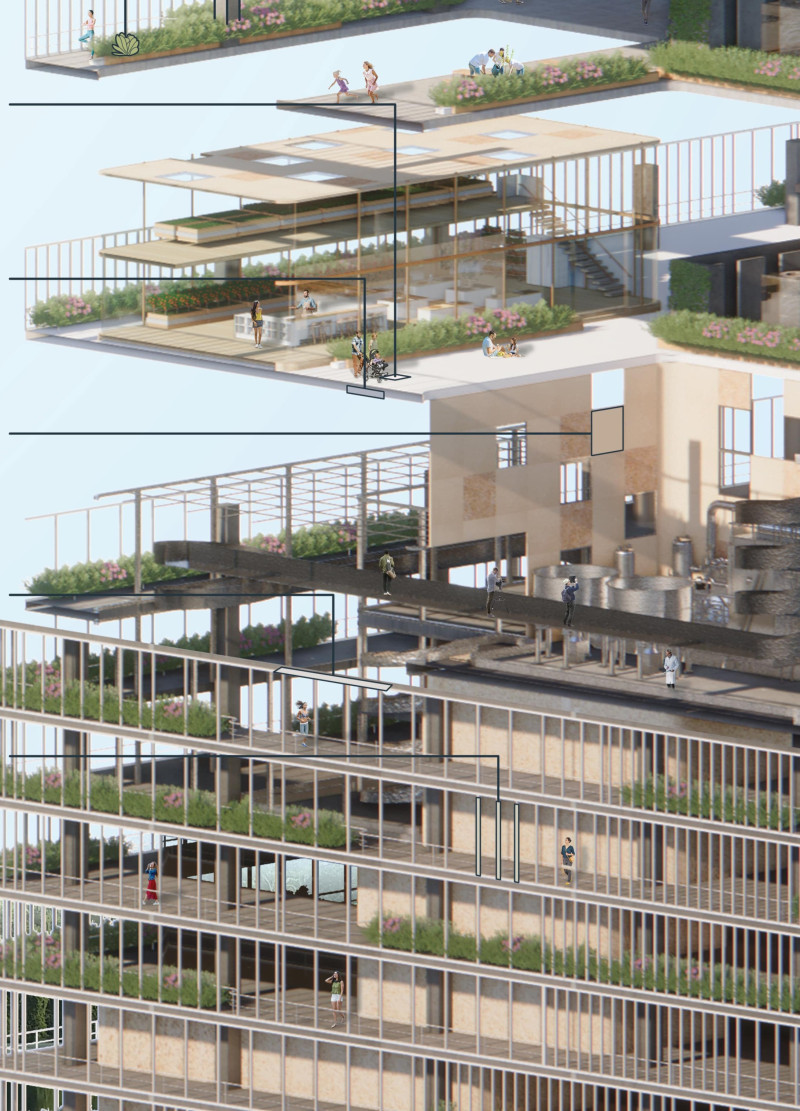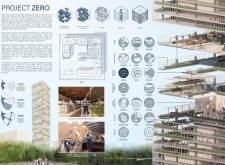5 key facts about this project
Project Zero is an initiative located in Singapore that focuses on urban waste management with the design of a skyscraper aimed at integrating sustainable practices into daily life. The project seeks to change how people view waste, transforming it from something to throw away into a valuable resource. By placing waste management at the center of urban living, it supports the concept of a circular economy, promoting efficient waste processing and interaction among community members.
Design Concept
The main idea of Project Zero is to convert waste into usable materials. This approach challenges the common methods of incineration and landfilling seen in Singapore. The design encourages a blend of waste management into everyday life, promoting a culture of sustainability among residents. The skyscraper serves as a vertical example of waste management, featuring various facilities that treat both organic and inorganic materials.
Functional Integration
The layout of Project Zero is carefully arranged to support various waste processing technologies. It includes dedicated spaces for food waste processing and educational facilities, like a cooking studio, where community members can learn about sustainable practices. This thoughtful integration enhances how the building works and strongly emphasizes public involvement in managing waste.
Materiality and Resource Utilization
Although specific materials are not mentioned in the design, the intention is clear: to use repurposed waste as a significant resource. This goal aligns with sustainability principles and aims to reduce environmental impact. By focusing on reusing materials, Project Zero highlights how architecture can positively impact the ecosystem while addressing urban waste challenges.
Architectural Expression
The structure of Project Zero showcases a modern vision for urban living, emphasizing the importance of design in shaping how people understand waste. The skyscraper is a symbol of the community’s approach to waste management. Its vertical design serves practical needs and visually represents the significance of resource management in contemporary urban settings.
Inside the building, public galleries allow residents to engage with waste management efforts. These spaces encourage community participation, helping people connect with sustainable practices and better understand waste processing systems.


















































